Film Inquiry Recommends: The Films of David Bowie
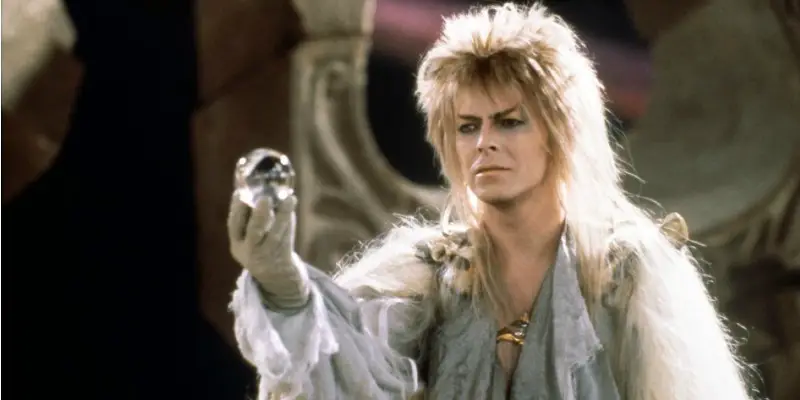
Alex is a 28 year-old West Australian who has a…
Over at our official Facebook page, we are currently posting daily film recommendations, with each week being a different theme. This is a collection of those recommendations! This week’s theme is focused on the cinematic work of the late singer and actor David Bowie.
Bowie was a singer who, due to his series of different on-stage characters and natural talent, made a smooth transition from music to screen, doing some memorable turns throughout his 40+ year career, from scene-stealing cameos to full leading roles which varied from sci-fi, comedy, action and more.
The biggest omission from this list is Bowie’s short scene as Pontius Pilate in Martin Scorsese’s The Last Temptation of Christ, but we wanted to focus on his more prominent films.
1. Into the Night (1985, John Landis)
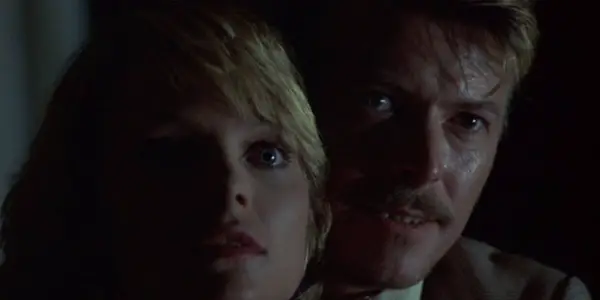
Made during the aftermath of the tragic Twilight Zone accident, Into The Night is an underrated comedic-thriller from director John Landis, starring Jeff Goldblum and Michelle Pfeifer, in her first role after Scarface.
The film is most famous for its huge list of cameos by famous Hollywood figures, which include Paul Bartel, Jim Henson, Don Siegel, David Cronenberg, Jonathon Demme, Rick Baker, Jack Arnold and many more. Some critics at the time (including Roger Ebert) said that Landis was being overtly self-indulgent due to these cameos, but each cameo is so brief that only a observant cinephile would find the constant cameos distracting.
Jeff Goldblum stars as depressed insomniac Ed Okin, who finds out that his wife is having an affair. Unable to sleep, his friend Herb (Dan Aykroyd) suggests he go to LAX in attempt to try and sleep there. Whilst relaxing, he is startled by jewel smuggler Diana (Michelle Pfeifer) who has just smuggled in priceless emeralds from the Shah of Iran’s treasury that everyone wants. They are tailed by an Iranian criminal gang and a British hitman, Colin Morris (David Bowie). Bowie shines in the film, playing the eccentric, but deadly hitman with exuberant efficiency.
Goldblum and Pfeifer really hold the film together, sharing genuine chemistry on-screen, with Pfeifer as the energetic go-getter and Goldblum as the dead-pan everyman stuck in the middle of the crazy situation. Landis really captures the lucid feeling of not being able to sleep, that hazy state of consciousness where everything around us seems surreal due to the increasing tiredness. As the night goes on and the events get more bizarre, the dazed Goldblum manages to keep it together which keeps the energy in the film going. The film was a box office bomb and received mixed reviews at the time, sadly the film’s release was overshadowed by Landis’ legal troubles to the Twilight Zone accident.
2. The Hunger (1983, Tony Scott)
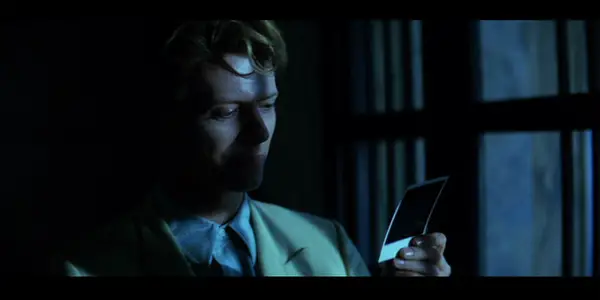
Tony Scott’s first full-length feature film, The Hunger is an experimental horror film which mixes gorgeous visuals with art-house flair, centred by a trio of great performances. Tony Scott was a director who played with a variety of different genres throughout his career, starting with arthouse horror, to the mainstream action film Top Gun, going on to dabble in buddy-cop films (Beverly Hills Cop 2 and Last Boy Scout) paranoid thrillers (Enemy of the State and Spy Game) and action-packed crime films (True Romance and Revenge), but sadly never returning to the horror genre.
Egyptian vampire Miriam Blaylock (Catherine Deneuve) has lived generations by constantly finding partners, feeding off them and keeping them immortal, until she is sick of them and buries them alive. When her current partner, John (David Bowie) catches on that he is going to be discarded by Miriam and finally starts dying, he contacts doctor Sarah Roberts (Susan Sarandon), who initially doesn’t believe him. When he dies in a spectacular fashion, Sarah decides to investigate John’s claims and gets entangled with Miriam. The film mixes elements of the French New Wave, gothic imagery and old school vampire lore.
Even with his brief appearance (the film’s marketing was quite deceiving with his role within the film) Bowie does a great job of being a stylish vampire who slowly realises that he’s at the end of his very long life. His shift from calm and collected demeanour to increasingly desperate and weak is a big example of Bowie’s natural acting talents, being one person who made the transition from singing to acting successfully, not being a distraction within the film. Scott’s subversive vampire tale is now available on Bluray, which is a highly recommended way of checking out this obscure horror film.
3. Merry Christmas Mr. Lawrence (1983, Nagisa Oshima)
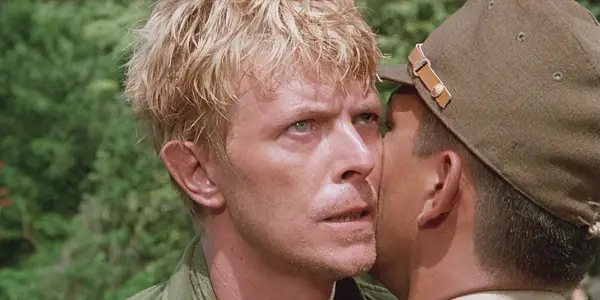
One of the last films from Japanese director Nagisa Oshima, an independent director, who, over his long career, grew incredibly disillusioned with Japanese cinema and the typical studio system. The film is based on Sir Laurens van der Post’s experiences as a Japanese prisoner of war during World War II, which were written in the books “The Seed and the Sower” and “The Night of the New Moon”.
During World War 2, Lt. Col. John Lawrence (Tom Conti) is a prisoner in a Japanese POW camp, led by Captain Yonoi (Ryuichi Sakamoto, in one of his few acting roles) when a new prisoner, british soldier Jack Celliers (David Bowie) is brought in. Celliers and the Japanese constantly clash, due to seeing Cellier’s surrender as a sign of weakness, strongly believing in the sense of honor and that Celliers should’ve committed suicide rather than give up.
Lawrence, due to his ability to speak Japanese and English and his level-headed nature, tries to act as a balance between the two sides, a fight which eventually escalates in problems for everyone. The film also stars a young Takeshi ‘Beat’ Kitano, before his fame through his subversive yakuza and comedy films.
It’s hard to lock down the film’s plot synopsis as multiple character arcs and storylines are happening, with none really taking the centre stage. Oshima does a terrific job of juggling each of these plots, giving each of his characters time to shine and flesh out their personal traits, which allows the audience to connect and engage with their individual plights.
Bowie is technically the main character here, playing the outspoken British soldier that shakes up the stark camp grounds. One of the more underrated war films, confidently made by a director who liked to play outside of the system.
4. Basquiat (1996, Julian Schnabel)
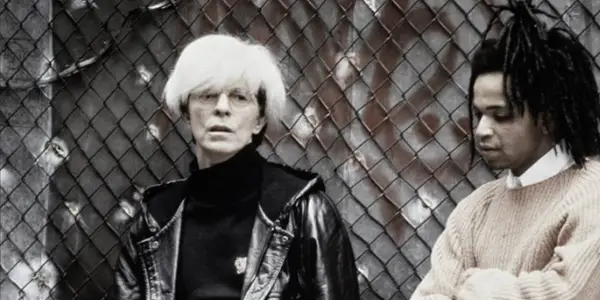
Basquiat, a biographical drama film based on the life of influential post-modernist artist Jean-Michel Basquiat, as he struggles to deal with the success of his art and his budding friendship with pop culture icon Andy Warhol (David Bowie).
The film is directed by artist Julian Schnabel, who would go onto to direct Before Night Falls, the Oscar-nominated film that would be the breakthrough film for actor Javier Bardem. Basquiat has quite the star-studded cast, with the supporting actors including Benicio Del Toro, Dennis Hopper, Gary Oldham, Christopher Walken, Willem DeFoe, Paul Bartel, Courtney Love, Paul Bartel and more.
Starting off living on the streets in a cardboard box in New York city, Jean-Michel Basquiat (a young Jeffrey Wright), a struggling artist, has his whole life shifted when he is discovered by Andy Warhol and his entourage of art friends, who make him a star. Basquiat becomes friends with the comical Warhol (Bowie), where he slowly learns the trials and tribulations that comes with fame. Basquiat tragically died young at the age of 27 due to a heroin overdose, shortly after the death of Warhol.
Paul Morrissey, who directed a series of films in the 70’s with Andy Warhol, commented positively on David Bowie’s portrayal of Warhol, stating “Bowie was the best by far. You come away from Basquiat thinking Andy was comical and amusing, not a pretentious, phony piece of shit, which is how others show him”, noting that Bowie had met Warhol at some points in their respective careers.
Whilst the film couldn’t use any of Basquiat’s actual pieces of art due to legal reasons with his family, the film does a great job of highlighting the turbulent life of Basquiat, an artist whose work is quite influential in the art world still.
5. The Man Who Fell to Earth (1976, Nicholas Roeg)
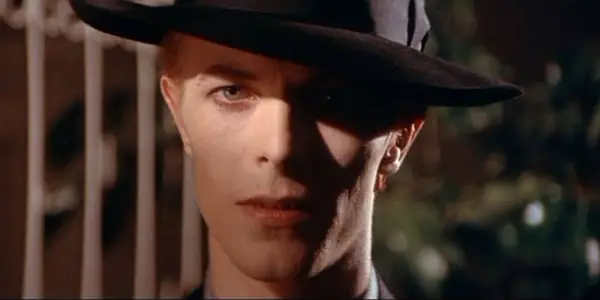
Based on Walter Tevis‘ 1963 novel of the same name, Nicholas Roeg’s sci-fi drama film served as the first starring role for David Bowie, a role which would influence his ‘Thin White Duke’ character.
Nicholas Roeg, an arthouse director whose previous three films were a string of terrific titles, Performance, Walkabout and Don’t Look Now, startled audiences with this film when it originally came out. Filled with highly sexualised imagery and large amounts of nudity, The Man Who Fell To Earth struggled financially but did well commercially thanks to Bowie’s great central performance and Roeg’s crazy imagery.
Thomas Jerome Newton (Bowie), a humanoid alien, comes to Earth in an attempt to take water back to his own planet, which is in the middle of a crippling drought. Using a bunch of original patents, he starts Worlds Enterprises, a company which generates billions of dollars due to its original innovations, thanks to Newton’s advanced knowledge. This wealth is generated in an attempt of Newton’s to get the resources required to make it back home and save his planet. But with great wealth comes bring more problems, as the humans around him start to get jealous of his huge success, whilst he finds love in Mary-Lou (Candy Clark) which changes his perspective on Earth life.
This is a unique science fiction film, one that focuses on its characters and themes rather than outlandish special effects or setting up an expansive technological universe. Newton’s alien design is only briefly hinted at, an alien stuck in a human form who slowly gets taken by human addictions and falls victim to the evils of jealous men.
The film is quite slow and doesn’t feature much of a story, as Newton lives in a dreamy, almost emotionally vacant state. The film has become a cult classic, a frequently referenced film in pop culture, remade for television in the 80’s and one of the more sought after Criterion Collection titles.
6. The Prestige (2006, Christopher Nolan)
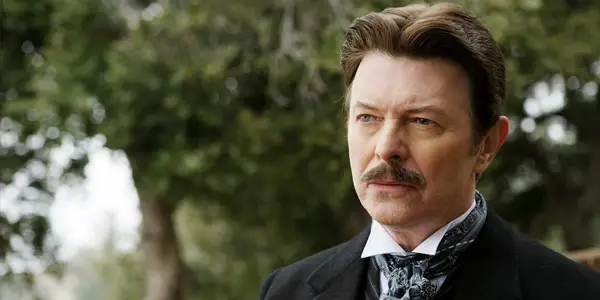
Based on Christopher Priest’s 1995 novel of the same name, Nolan’s The Prestige, made between Batman Begins and The Dark Knight, using many of the same cast and crew from those films. Made in 2006, which was a year of several competing films about stage magicians; The Prestige, Scoop and The Illusionist, with The Prestige being the best of the bunch.
During the 1800’s in London, two emerging magicians, Alfred Borden (Christian Bale) and Robert Angier (Hugh Jackman) decide to team up and perform together. When Robert’s wife Julia (Piper Perabo) dies during a performance, Robert blames Alfred which ignites a fierce rivalry where each magician, as their respective careers take off, try to constantly one-up each other through lies, sabotage and other awful acts which culminates in a dire situation for all.
David Bowie stars as Nikola Tesla, a fictionalised version of the scientist, as he is tasked by Angier to create a teleportation machine for him. Whilst he doesn’t get much screen-time in the film, Bowie uses his eccentric abilities to great effect here, giving some humanity to Tesla, a pop culture figure who is usually labelled as the crazy, weird scientist.
The Prestige is one Nolan’s best films outside of the Dark Knight trilogy, one which juggles multiple plotlines without getting confusing, with the star-studded cast being used to great effect with not one bad performance in the group. Most people probably have seen The Prestige at this point but if you haven’t, I’d say now is the time.
7. Labyrinth (1986, Jim Henson)
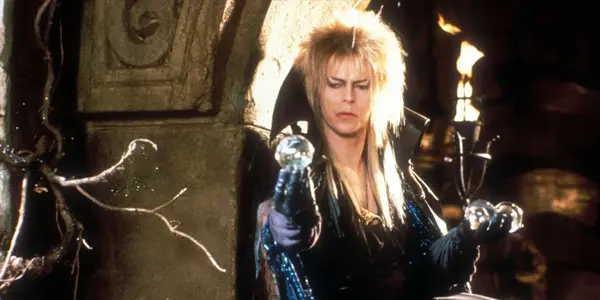
It’s hard to talk about David Bowie’s filmography without referring to his iconic role as Jareth the Goblin King in Jim Henson’s final live-action feature film Labyrinth. An instrumental film to the childhood of many generations of children (continuing still today), Labyrinth is Jim Henson’s live-action follow-up to The Dark Crystal, a family-friendly fantasy film which mixes live action cinematics with Henson’s trademark puppets.
Whilst a cult classic today, the film bombed commercially when released back in 1986, which lead to quite a dark period in Jim Henson’s life where he took the failure quite personally. Just before his death in 1990, the home video market had brought in a new wave of fans, turning the film into an early cult film, which when hearing about it, was highly appreciated by Henson.
Labyrinth is about Sarah (Jennifer Connelly), who is frustrated that she must constantly take care of her younger brother Toby (Toby Froud). In a desperate plea for relief, she wishes for Toby to be taken by Goblins, using the power of the book of Labyrinth. When her wish actually comes true and Toby is taken, Sarah must follow him into the Labyrinth and save him within 13 hours, before he is transformed into a goblin by Jareth the Goblin King (Bowie).
Outside of a poorly aged special effects sequence (The Fireys dance number), the film has aged quite well. Bowie once again displayed his natural acting ability, infusing Jareth with a humorous and sympathetic side to his villainous character which elevates him from most family film antagonists. His frequent singing throughout the film infuses the film with a catchy soundtrack, which has contributed to the film’s maintained success.
Henson’s creative use of puppeteering is on display here, being able to breath in life into these imaginative puppets that fill the film with an array of original, colourful creatures which really give the film a sense of an expanded universe. A children’s film which is just as entertaining for adults, Labyrinth is one film that if you haven’t already seen it, any time now would be a good idea.
Are there any other David Bowie films that we missed that you love?
Does content like this matter to you?
Become a Member and support film journalism. Unlock access to all of Film Inquiry`s great articles. Join a community of like-minded readers who are passionate about cinema - get access to our private members Network, give back to independent filmmakers, and more.













